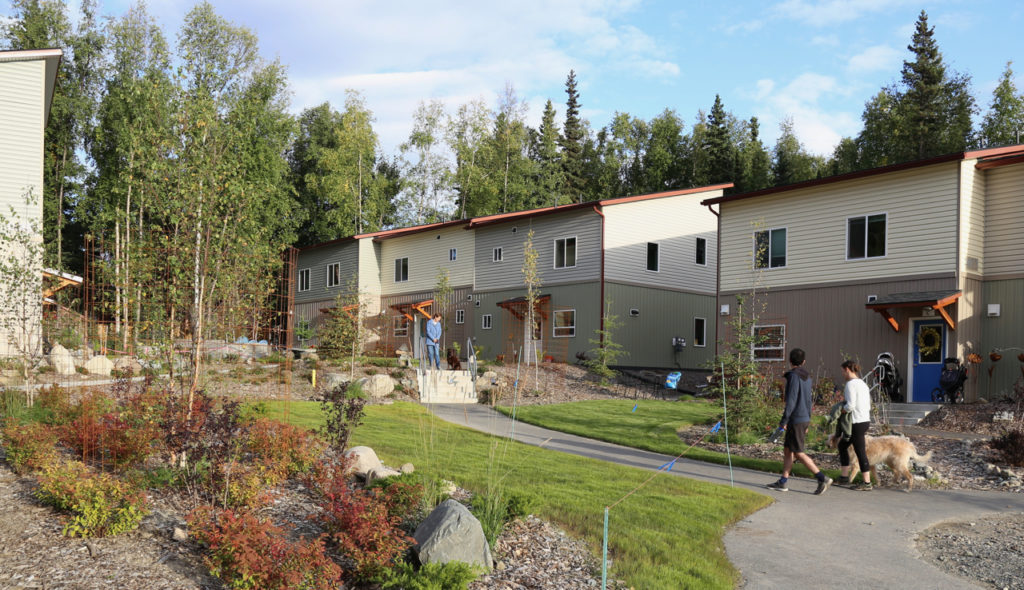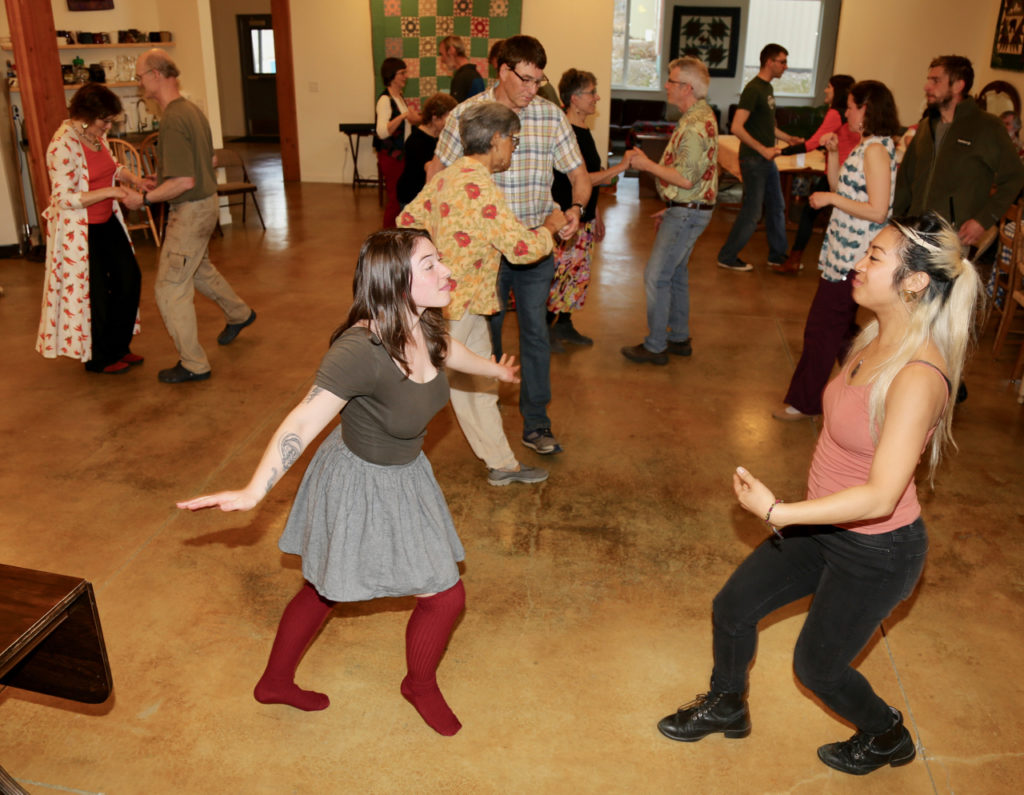 Imagine … strolling down a neighborhood path, children playing in park-like landscaping, friendly neighbors gathered on a front porch.
Imagine … strolling down a neighborhood path, children playing in park-like landscaping, friendly neighbors gathered on a front porch.This is a living neighborhood, rich in social vitality and ecological sustainability. This is cohousing.
The fundamental aspect of cohousing is that neighbors can get to know each other. In order to create that sense of community, cohousing neighborhoods consist of 20-40 private homes, clustered among shared facilities, fostering a village feeling. A typical Common House includes a large kitchen and dining area for optional shared dinners a few nights per week, a living room, kids’ play room, and guest rooms. Some also include a workshop and other rooms. Recreational open spaces are shared. The design of the neighborhood encourages spontaneous interaction, including conversation, movie nights, game playing, dancing, and more. It also provides increased security because everyone knows who belongs in the neighborhood, and most homes face each other.
Photos of Ravens’ Roost: Above, the fire lane between the townhomes;
Below, a dance party in the Common House dining area.

Ecological sustainability is achieved with smaller private homes, “green” buildings and energy-efficient appliances, some of which are shared. Residents often drive less because they can socialize close to home.
Cohousing is custom-designed by future residents. The legal structure is similar to that of condominium developments, except that all households have the opportunity to participate in decision-making by consensus.
See Cohousing in Action:
http://www.youtube.com/watch?feature=player_embedded&v=BefwcWoM2ME
Watch this 10-minute TED Talk video, “How Cohousing Can Make Us Happier and Live Longer”
Articles about Cohousing:
“Expanding Cohousing: The New, Old-Fashioned American Dream” describes what it’s like to develop and live in a cohousing community. From boston.com, January 28, 2015.
“Raising Kids in Cohousing,” from Mother Earth Living, December 2012.
Book:
- Creating Cohousing: Building Sustainable Communities, by Kathryn McCamant and Charles Durrett (June 2011, New Society Press).
The 6 Defining Characteristics of Cohousing:
1. Participatory process. Future residents participate in the design of the community so that it meets their needs. A well-designed, pedestrian-oriented community without significant resident participation in the planning may be “cohousing-inspired,” but it is not a cohousing community.
2. Neighborhood design. The physical layout and orientation of the buildings (the site plan) encourage a sense of community. For example, the private residences are clustered on the site, leaving more shared open space. The dwellings typically face each other across a pedestrian street or courtyard, with cars parked on the periphery. Often, the front doorway of every home affords a view of the common house. What far outweighs any specifics, however, is the intention to create a strong sense of community, with design as one of the facilitators.
3. Common facilities. Common facilities are designed for daily use, are an integral part of the community, and are always supplemental to the private residences. The common house typically includes a common kitchen, dining area, sitting area, children’s playroom and laundry, and also may contain a workshop, library, exercise room, crafts room and/or one or two guest rooms. Except on very tight urban sites, cohousing communities often have playground equipment, lawns and gardens as well. Since the buildings are clustered, larger sites may retain several or many acres of undeveloped shared open space.
4. Resident management. Residents manage their own cohousing communities, and also perform much of the work required to maintain the property. They participate in the preparation of common meals, and meet regularly to solve problems and develop policies for the community.
5. Non-hierarchical structure and decision-making. Leadership roles naturally exist in cohousing communities, however no one person (or persons) has authority over others. Most groups start with one or two “burning souls.” As people join the group, each person takes on one or more roles consistent with his or her skills, abilities or interests. Most cohousing groups make all of their decisions by consensus, and, although many groups have a policy for voting if the group cannot reach consensus after a number of attempts, it is rarely or never necessary to resort to voting.
6. No shared community economy. The community is not a source of income for its members. Occasionally, a cohousing community will pay one of its residents to do a specific (usually time-limited) task, but more typically the work will be considered that member’s contribution to the shared responsibilities.